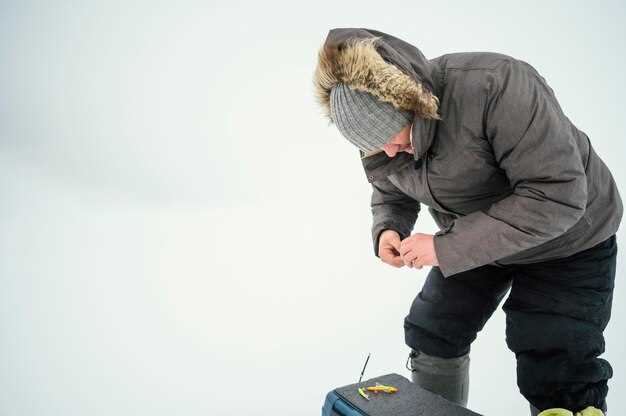How to winterize an outboard engine

Winterizing your outboard engine is a critical aspect of maintenance that ensures its longevity and optimal performance. As temperatures drop, failing to prepare your engine for the winter months can lead to costly repairs and diminished functionality come spring. Following the right steps for winterizing is essential for protecting your investment and ensuring that your engine is ready for action when boating season resumes.
Proper winterization involves a series of meticulous tasks designed to safeguard your engine against the harsh winter elements. Each step plays a significant role in preventing issues such as freezing, corrosion, and fuel degradation. By adhering to a structured winterizing process, you can avoid common pitfalls and keep your engine running smoothly for years to come.
This guide will walk you through the necessary steps to effectively winterize your outboard engine. From fuel stabilization to flushing and storage preparations, each procedure is essential for thorough maintenance during the colder months. Keep reading to learn how to protect your outboard engine and ensure its readiness for the next boating season.
Draining Fuel and Adding Stabilizer for Optimal Storage

Proper winterizing of your marine outboard engine is essential to ensure its longevity and reliable performance when spring arrives. One of the crucial steps in this process is draining fuel and adding a fuel stabilizer.
First, begin by draining any remaining fuel from the fuel tank. This prevents old fuel from gumming up the engine components over the winter months. Utilize a siphon pump or the engine’s fuel line to completely remove the fuel. Be sure to dispose of the drained fuel responsibly according to local regulations.
Next, you should add a quality fuel stabilizer to the tank. This additive works by preventing the fuel from oxidizing and breaking down, which can lead to clogging and poor performance when trying to restart your engine. Follow the manufacturer’s instructions on the appropriate amount to use, which is typically based on the volume of fuel you have in the tank.
After adding the stabilizer, fill the tank to the top with fresh fuel. A full tank minimizes the amount of air in the tank, which can lead to condensation and moisture buildup over the winter. Give the engine a brief run to ensure that the stabilizer is distributed throughout the fuel system. This step is essential in protecting fuel lines, injectors, and the carburetor from fuel degradation and corrosion.
By thoroughly draining the fuel and adding a stabilizer, you are taking vital steps in winterizing your outboard engine, ensuring it remains in optimal condition and is ready for action when boating season returns.
Flushing the Cooling System to Prevent Freezing Damage

Proper maintenance of your outboard engine is essential, especially when preparing it for winter storage. Flushing the cooling system is a critical step in the winterizing process that helps to prevent freezing damage during cold weather. This procedure ensures that all residual water is removed from the engine’s cooling passages, minimizing the risk of ice formation.
To begin, connect a flushing device to the engine’s water intake. This device allows fresh water to flow through the cooling system. Start the engine and let it idle for a few minutes while monitoring the water flow from the telltale. This step helps to dislodge any debris, sediment, or salt deposits that may have accumulated over the boating season.
After flushing with fresh water, it is advisable to use a mix of antifreeze in the system. This further protects the engine components by lowering the freezing point of any remaining water. Make sure to use the appropriate type of antifreeze specified by the manufacturer to prevent corrosion and ensure optimal performance.
Once the flushing is complete, check for any leaks or signs of wear in the cooling system, including hoses and connectors. Address any issues immediately to maintain the integrity of the engine. By taking the time to thoroughly flush the cooling system, you significantly reduce the risk of damage caused by freezing, ensuring your outboard engine is ready for a reliable performance when the boating season returns.
Inspecting and Protecting Electrical Components from Moisture
Winterizing your outboard engine requires careful attention to the electrical components, as moisture can cause significant damage. Begin by disconnecting the battery and removing it from the vessel to prevent corrosion and ensure safety during maintenance. Check all electrical connectors and wiring for signs of wear or corrosion. Pay close attention to areas where wires enter connectors, as these are prone to water intrusion.
Utilize a corrosion inhibitor spray on terminals and connections to form a protective barrier against moisture. Make sure to clean any existing corrosion with a wire brush or specialized cleaner before applying the inhibitor. Additionally, inspect your wiring harness and look for cracks in insulation that can allow water to penetrate. Any damaged wiring should be repaired or replaced to maintain electrical integrity.
Examine the engine’s electronics, such as the ignition system and sensors, for water ingress. Seals and gaskets should be intact to ensure protection against moisture. If necessary, replace any worn seals with marine-grade materials designed specifically to withstand harsh environments.
Finally, consider using moisture-absorbing packets or desiccants within the engine compartment to help reduce humidity levels and prevent condensation. Proper storage of the outboard engine, ideally in a dry, temperature-controlled environment, will further protect all electrical components throughout the winter months.




